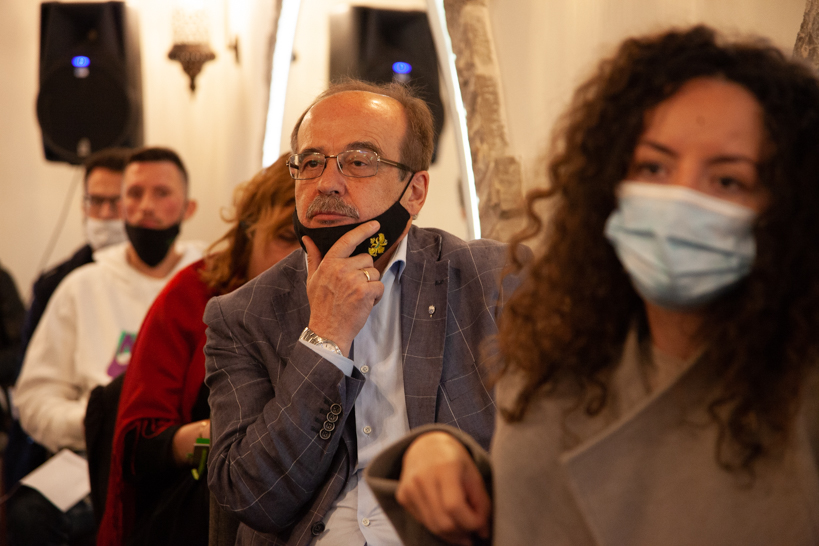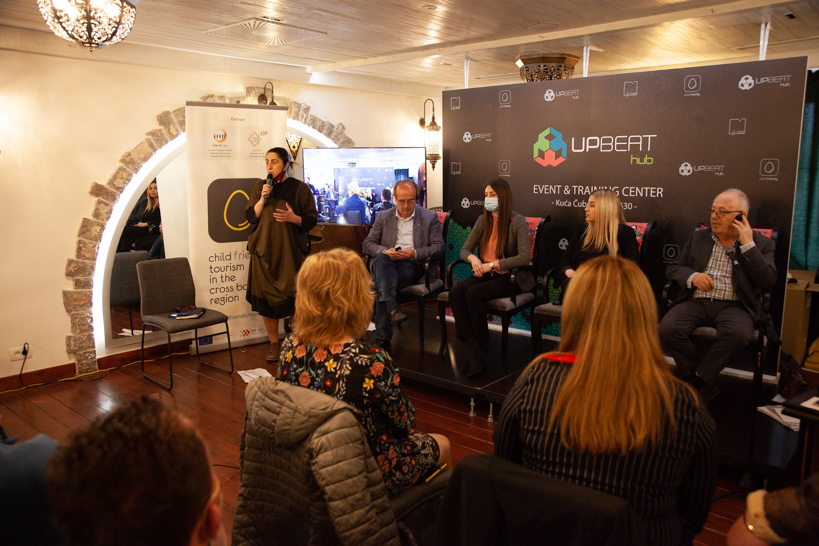The final conference of the project Child Friendly Tourism in the cross-border region was held on April 22nd and 23rd in Podgorica. The conference saw the participation of hundred participants from Montenegro and Albania. The participants that attended the conference were from the public and private sectors, mostly from the tourism industry and government institutions that support the tourism industry and works on strategic development tourism.
The Conference was opened by Ivana Đurović, State Secretary for Tourism at the Ministry of Economic Development. She emphasized the importance of the project and the availability of the Ministry of Economic Development on such topic. The manager of the Capital of Podgorica, Marjan Junčaj, spoke about the role of the Capital as a partner and about the projects that the Capital is working on, such as the construction of playgrounds, landscaping and other activities. The director of ADP-Zid, Sanda Rakočević, assessed that the project met the set goals, which were to contribute to the attractiveness of cross-border regions for tourists who go on holidays with families and children. Through the project, a completely new brand was developed – Child-friendly. The brand is protected as authentically Montenegrin. In Montenegro, 50 tourist and service facilities are branded with the Child-Friendly brand. The brand is also represented on the Albanian coast, with 10 hotels in the Shkodra and Lezhe region which have been branded as Child-friendly.

During the conference CFT (child friendly tourism) standards were presented and are applied in 60 hotels/restaurants/coffee places in Montenegro and Albania. Through the project basic and premium standards have been developed, and it will depend on the hotelier’s which standard they will use.
Apart from live audience there were also numerous online participants, mainly tourism experts. Mr Eržen from Slovenia presented the concept of Tourism 4.0 on behalf of Arctur.si, which aims to direct tourists to less visited destinations in Slovenia using tokenization. They also analyse the research of tourist offers in Slovenia, where they consider where tourists go and how they can diversify them. Josipa Benček on behalf of the Kutin organization presented the AR application, which is intended primarily for children and is educational in nature. The application is designed for children to receive tablets during their stay in nature, and when coming across different animals, they can scan and get more information about them. The Kutin organization also offers training packages in hotels, instead of playrooms where children usually spend time. Mr Abderrahim Kassou from Morocco took the opportunity to present current activities in regards to using innovations and creativity in promoting and maintaining the value of cultural and traditional heritage of his country. He shared with the audience examples of recent modifications and adjustments in regards to communicating touristic potential to different target groups (young people, experts, tourists looking for active holiday etc.) and valorisation of concrete locations.

In the last session of the first day there was also talk about COVID and the post-COVID period. Maurizio Davlio from Italy spoke about tourism and Italy, trends in tourism in that country as well as how the pandemic affected a country that has a large number of tourists throughout the whole year. Hjortur Smarason on behalf of TO Visit Greenland said that they are facing difficulties and that the lock down that has been going on for months prevents them from carrying out any activities. Mirjana Ivanuša, MA, presented the concept of vouchers in Slovenia which were distributed to all citizens and used proportionately. The condition was that the vouchers must be either used by the end of 2021 or they can be redeemed. Vouchers could only be used for B&B offers, so there was a huge number of packages offered to citizens.



